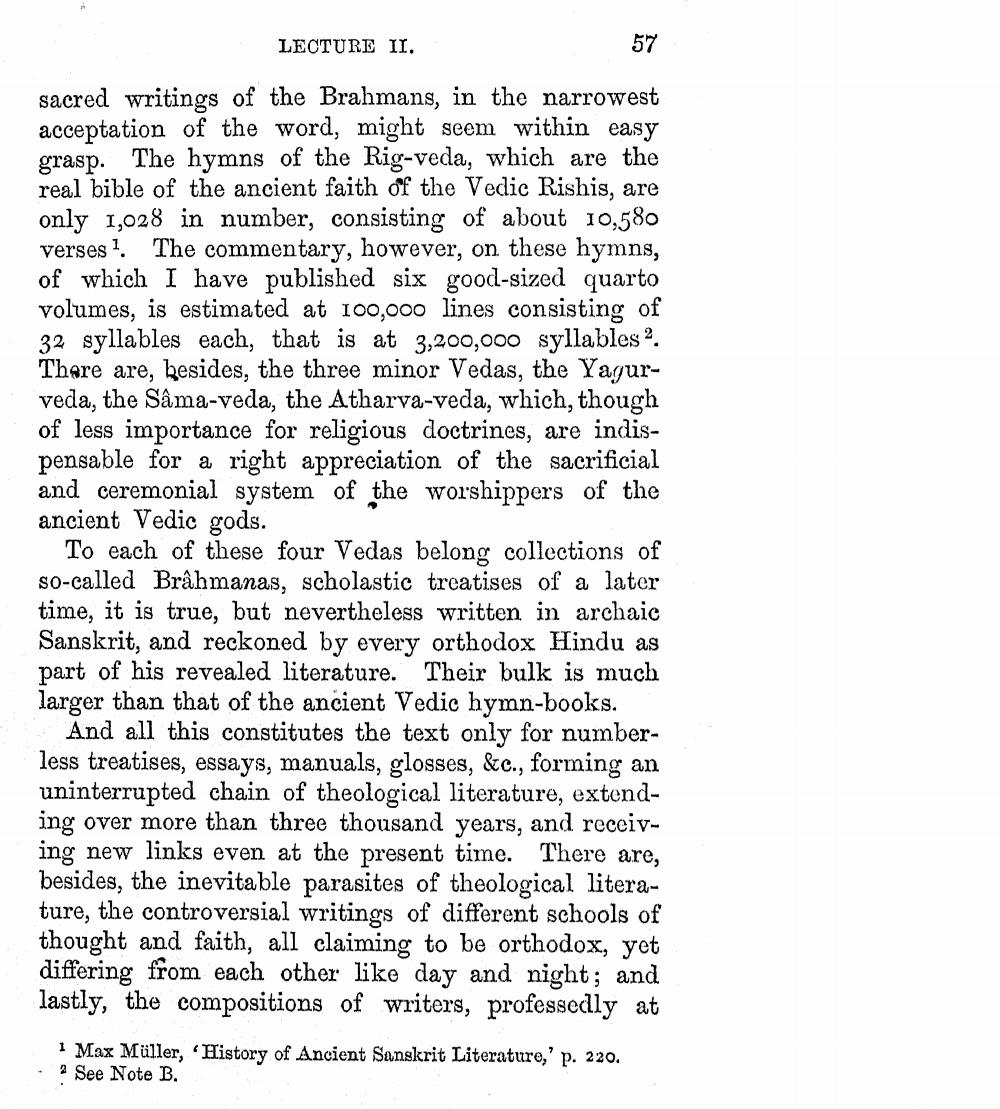________________
LECTURE II.
57
sacred writings of the Brahmans, in the narrowest acceptation of the word, might seem within easy grasp. The hymns of the Rig-veda, which are the real bible of the ancient faith of the Vedic Rishis, are only 1,028 in number, consisting of about 10,580 verses 1. The commentary, however, on these hymns, of which I have published six good-sized quarto volumes, is estimated at 100,000 lines consisting of 32 syllables each, that is at 3,200,000 syllables 2. There are, besides, the three minor Vedas, the Yagurveda, the Sâma-veda, the Atharva-veda, which, though of less importance for religious doctrines, are indispensable for a right appreciation of the sacrificial and ceremonial system of the worshippers of the ancient Vedic gods.
To each of these four Vedas belong collections of so-called Brahmanas, scholastic treatises of a later time, it is true, but nevertheless written in archaic Sanskrit, and reckoned by every orthodox Hindu as part of his revealed literature. Their bulk is much larger than that of the ancient Vedic hymn-books.
And all this constitutes the text only for numberless treatises, essays, manuals, glosses, &c., forming an uninterrupted chain of theological literature, extending over more than three thousand years, and receiving new links even at the present time. There are, besides, the inevitable parasites of theological literature, the controversial writings of different schools of thought and faith, all claiming to be orthodox, yet differing from each other like day and night; and lastly, the compositions of writers, professedly at
1 Max Müller, 'History of Ancient Sanskrit Literature,' p. 220. 2 See Note B.




